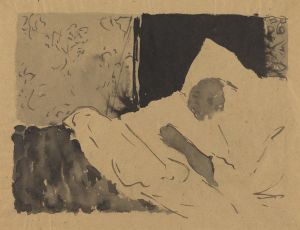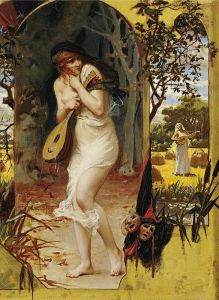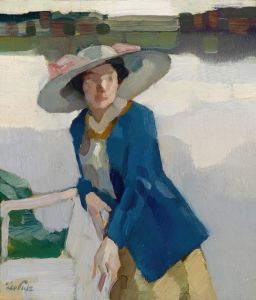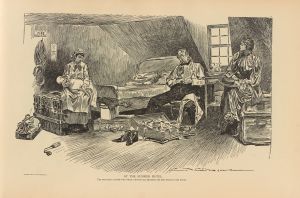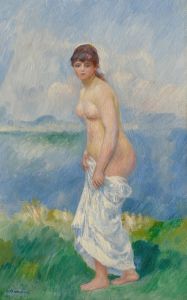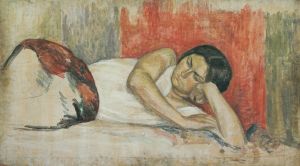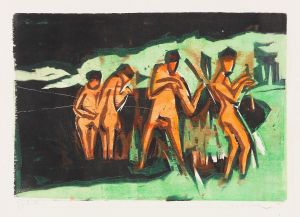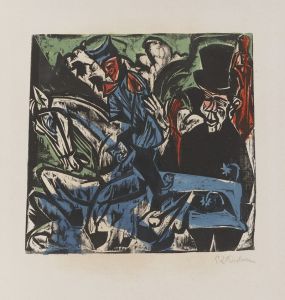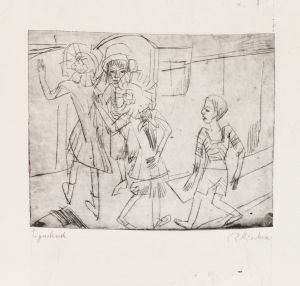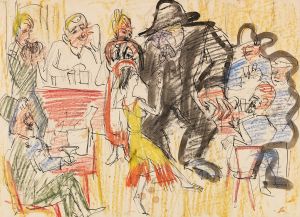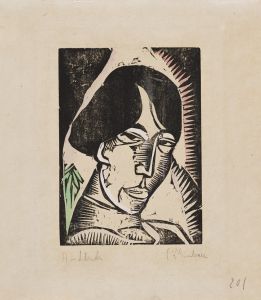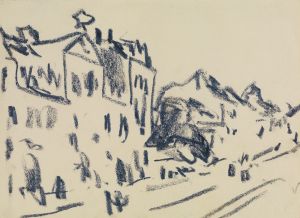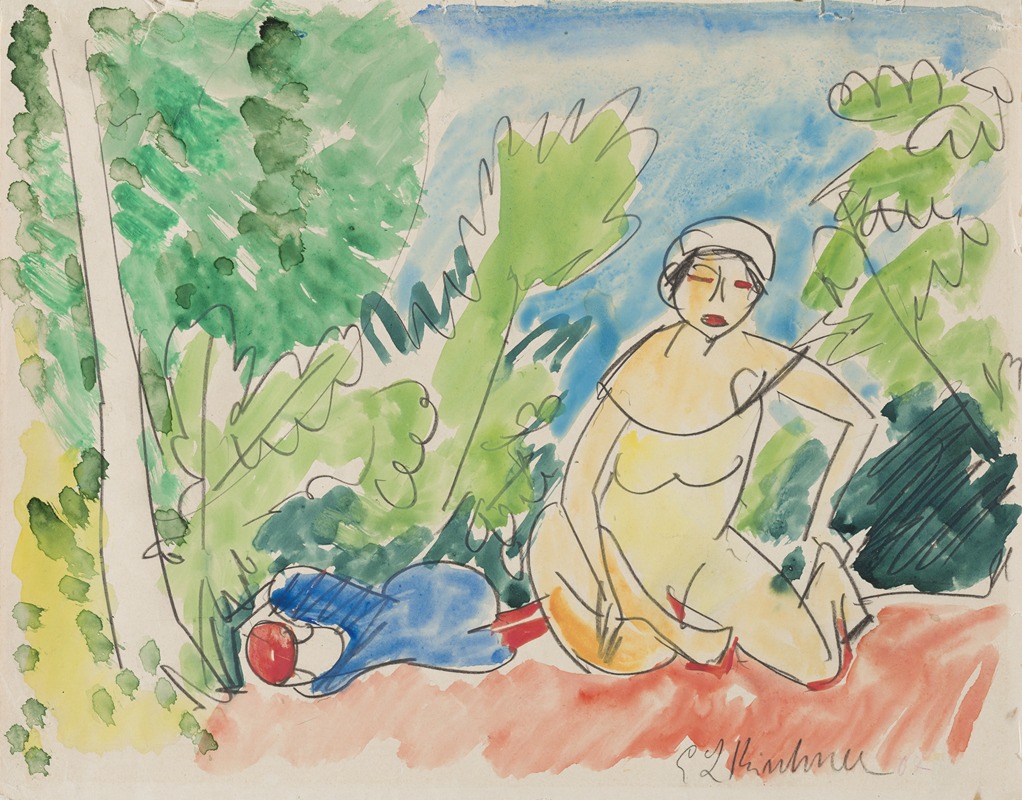
Badende am See
A hand-painted replica of Ernst Ludwig Kirchner’s masterpiece Badende am See, meticulously crafted by professional artists to capture the true essence of the original. Each piece is created with museum-quality canvas and rare mineral pigments, carefully painted by experienced artists with delicate brushstrokes and rich, layered colors to perfectly recreate the texture of the original artwork. Unlike machine-printed reproductions, this hand-painted version brings the painting to life, infused with the artist’s emotions and skill in every stroke. Whether for personal collection or home decoration, it instantly elevates the artistic atmosphere of any space.
"Badende am See" (Bathing at the Lake) is a painting by the German expressionist artist Ernst Ludwig Kirchner, created in 1910. Kirchner was a leading figure in the German Expressionist movement and a founding member of the artist group Die Brücke (The Bridge), which played a pivotal role in the development of modern art in the early 20th century. The group sought to create a new form of artistic expression that bridged traditional academic art and the avant-garde.
"Badende am See" exemplifies Kirchner's distinctive style, characterized by bold colors, dynamic compositions, and a focus on the human figure. The painting depicts a group of nude figures by a lake, a common theme in Kirchner's work during this period. The scene captures a moment of leisure and freedom, reflecting the artist's interest in the natural world and the human body's relationship to it.
The composition of "Badende am See" is notable for its vibrant use of color and expressive brushwork. Kirchner employs a palette of bright, contrasting colors to convey the energy and vitality of the scene. The figures are rendered with elongated forms and exaggerated poses, emphasizing movement and emotion over realistic representation. This approach is typical of Kirchner's work and reflects the influence of non-Western art, particularly African and Oceanic art, which he admired for its perceived authenticity and directness.
Kirchner's choice of subject matter in "Badende am See" is also significant. The depiction of nude figures in a natural setting was a recurring motif in his work and that of Die Brücke. It symbolized a return to a more primal and unencumbered state of being, free from the constraints of modern society. This theme resonated with the group's broader goals of breaking away from traditional artistic conventions and exploring new forms of expression.
The painting also reflects Kirchner's interest in the concept of the "primitive" as a source of inspiration. By portraying figures in a natural, unspoiled environment, he sought to capture a sense of purity and authenticity that he felt was lacking in contemporary urban life. This idea was central to the philosophy of Die Brücke, which aimed to create art that was both innovative and deeply connected to the human experience.
"Badende am See" is an important example of Kirchner's work during a formative period in his career. It demonstrates his commitment to exploring new artistic possibilities and his desire to convey the emotional and spiritual dimensions of human existence. The painting is held in high regard for its boldness and originality, and it continues to be celebrated as a key work in the history of German Expressionism.
Today, "Badende am See" is housed in the collection of the Brücke-Museum in Berlin, which is dedicated to the work of the Die Brücke artists. The museum's collection provides valuable insight into the development of expressionist art in Germany and Kirchner's significant contributions to the movement. Through works like "Badende am See," Kirchner's legacy as a pioneering figure in modern art endures, offering viewers a glimpse into the vibrant and transformative world of early 20th-century expressionism.





